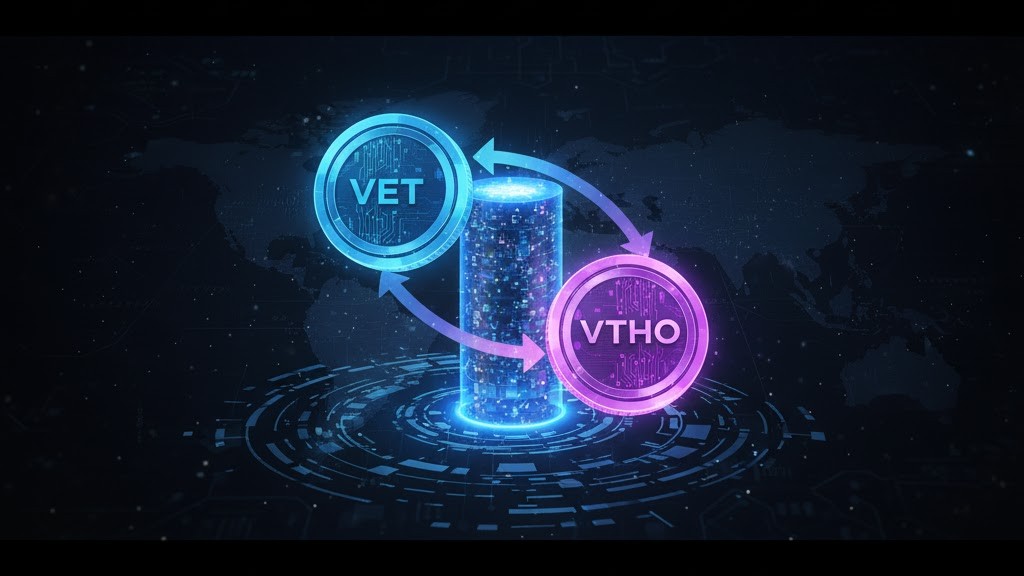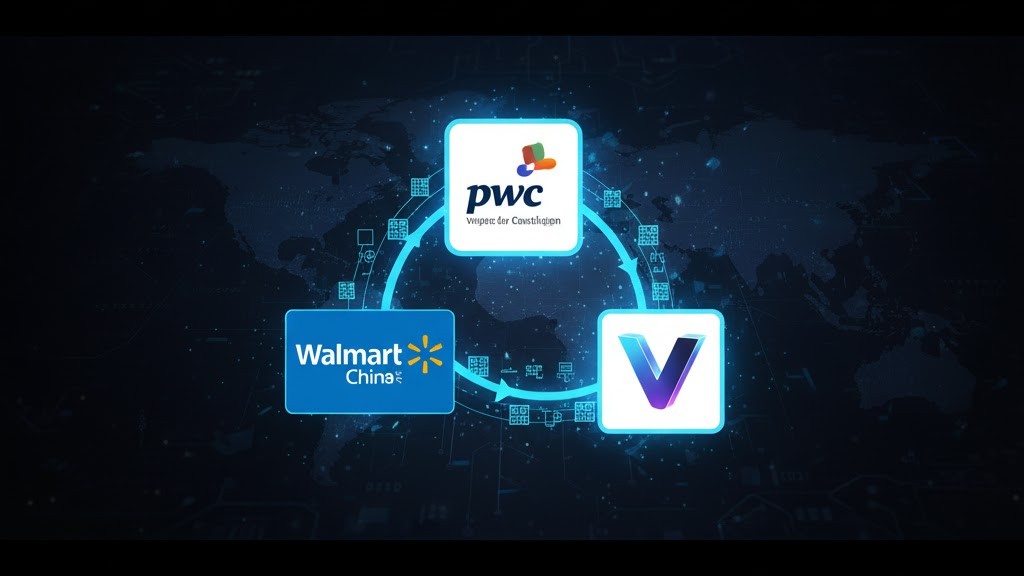The Complete VeChain (VET) Growth & Analysis in 2025
Explore VeChain (VET)’s complete 2025 growth and analysis. Discover its real-world use cases, blockchain utility, partnerships, and long-term market potential.
By Yaser | Published on October 24, 2025

Origins: From Enterprise Vision to VeChainThor
VeChain began in 2015 with a simple, pragmatic idea: use blockchain to make real-world business data trustworthy at scale. Co-founded by Sunny Lu (ex-CIO at Louis Vuitton China), the project started under Bitse before evolving into VeChainThor, a purpose-built chain for enterprise apps. From the outset, the team targeted supply chains, product authenticity, and data integrity—areas where provenance and tamper-proof records matter most. That focus shaped everything that followed: a dual-token economy, enterprise tooling, and partnerships that turned pilots into production.
Early “why VeChain”
Unlike many crypto projects that began with financial speculation, VeChain’s pitch was business value first: verified data for products and processes, anchored to the chain and readable by anyone who needs assurance. That practical DNA helped it land credible partners and real use cases early.
From idea to mainnet
The team moved from Ethereum experiments to launching its own chain, VeChainThor, designed for predictable costs and enterprise-grade throughput. That shift let them tailor tokenomics, governance, and tooling for real operations rather than only DeFi speculation.
Why enterprises listened
Enterprises could finally connect physical goods to on-chain attestations: scan a code or chip, see the origin, the custody path, and inspection events. That reduces counterfeits, recalls, and compliance headaches—and that practicality opened doors.

The Dual-Token Model: VET + VTHO
VeChain’s economy splits value and gas: VET carries value/governance signals, while VTHO pays for transactions. This design stabilizes operating costs, which is crucial for business planning. Burn/issuance dynamics target fee predictability; meanwhile, vetted Authority Masternodes run Proof-of-Authority (PoA) for energy-efficient consensus. For users, the result is straightforward: hold or pay in VET, consume VTHO for transactions, and build without gas-price shock. It’s a boring—but beautiful—feature when you’re shipping real software.
Why split tokens?
Separating value (VET) from gas (VTHO) helps insulate operational costs from market swings. Businesses can budget VTHO like fuel, while VET can reflect broader network value and incentives.
PoA and authority nodes
PoA uses vetted validators to secure the network with high efficiency. For enterprise workflows needing finality, predictable performance often beats pure throughput hype.
Developer comfort
predictable fees + clear token mechanics = fewer nasty surprises in production. That’s why VeChainThor has kept a steady enterprise audience even as narratives rotate in crypto.

Real-World Partnerships: Walmart China and Beyond
VeChain’s calling card is deployment, not decks. A flagship example: Walmart China built a blockchain traceability platform on VeChainThor with PwC and partners, letting shoppers scan products (via WeChat) to see source, logistics, and inspection data—even setting targets for traceable meat, vegetables, and seafood. These aren’t lab demos; they’re consumer-facing systems at scale. Other ecosystems cite automotive, food safety, luxury goods, and sustainability pilots. That breadth keeps VeChain in C-suite conversations about digitizing supply chains.
Why Walmart China mattered
It proved that millions of shoppers could interact with on-chain provenance seamlessly, without needing “crypto knowledge.” That UX lesson applies to every vertical VeChain touches.
ToolChain for speed
VeChain ToolChain™ packages common modules so enterprises can roll out faster—critical when stakeholders span suppliers, logistics, and retailers. Time-to-value wins deals.
Sector diversity
From food safety to automotive maintenance records and sustainability labeling, VeChain’s integrations show that “blockchain for business” can be tangible, not theoretical.

Under the Hood: PoA Upgrades and the Push for Scale
VeChain iterates quietly but consistently. The PoA 2.0 roadmap advanced toward a consensus blend aimed at marrying Nakamoto security with BFT-style finality, improving reliability without sacrificing efficiency. In parallel, the project has emphasized EVM compatibility, developer tooling, and lower-friction onboarding. The goal, again, is pragmatic: remove blockers that stop real companies from integrating blockchain into everyday processes, while keeping the chain lean and affordable.
Why PoA 2.0 mattered
It targeted a safer, smoother base layer—so apps can finalize quickly and keep fees steady. When your app moves food or auto data, that matters more than chasing TPS headlines.
EVM and interoperability
EVM alignment means developers can port skills and tools, shrinking the cost to experiment on VeChainThor. Interop and bridges extend that reach further as ecosystems converge.
Enterprise-ready by design
Predictable gas, auditable metadata, and clear governance are boring in a good way. Enterprise teams pick boring when it means fewer outages and budget surprises.

2025: Roadmaps, Tokenomics Tweaks, and the Freshest Headlines
2025 has been busy. Community and analyst roundups point to phases nicknamed Hayabusa/Stargate that focus on scalability, tokenomics tuning, and broader cross-chain reach; media noted integrations (e.g., with Wanchain) and hackathon pushes for builders. Most recently, the VeBetterDAO initiative’s token B3TR was announced as MiCAR-compliant per ESMA confirmation—useful for Europe-facing activity and a strong regulatory signal. Meanwhile, foundation updates discussed treasury health and partnerships despite a choppy market. Together, these show VeChain still shipping and aligning with compliance trends.
ESMA + MiCAR note (Oct 2025)
VeChain stated that B3TR (VeBetter’s native token) secured ESMA confirmation as MiCAR-compliant—a notable milestone for EU-jurisdiction comfort and institutional narratives.
Cross-chain + dev momentum
Roundups highlighted Wanchain connectivity across dozens of networks and ongoing hackathons to seed apps, signaling a push beyond single-ecosystem silos.
Treasury + operating runway
Coverage cited a $167M treasury figure in Q2 2025 updates—context for sustained building during market noise. Always verify primary reports when sizing theses.

Market View: VET/VTHO Dynamics, Adoption Signals, and Liquidity
Price is a lagging indicator; adoption is the lead. For VeChain, watch on-chain activity, ToolChain deployments, cross-chain usage, and regional regulatory wins. VET’s role in signaling network value and VTHO’s role in fees create a flywheel when activity rises: more transactions → more VTHO consumption → stronger case for VET as the ecosystem’s stake. For traders, liquidity on major venues and stable spreads matter; for builders, predictable costs and EVM access are the magnet. Tie both to verifiable enterprise usage.
Useful metrics to track
Monitor active addresses, tx counts, VTHO burn, and ToolChain case studies. Cross-chain bridge volumes and hackathon outputs also reveal momentum from developers, not just holders.
Listings and access
Liquidity across CEX/DEX plus bridges increases comfort for both retail and integrators. Depth reduces slippage, which is vital when enterprises or funds rebalance.
Narrative + compliance
MiCAR-aligned announcements help with European buyers and institutions that need regulatory clarity to allocate. Pair narrative catalysts with hard usage data before sizing positions.

Risks: Tech, Regulatory, and Execution
No thesis is bulletproof. On the tech side, any consensus hiccup, bridge vulnerability, or metadata dispute can slow adoption. On the regulatory front, rules evolve; compliance wins like MiCAR are positive but not panaceas. Execution risk is real too: pilots must convert to production, and production must stay simple for end-users. Finally, market cycles matter—enterprise budgets tighten in downturns, delaying integrations. Managing these risks means tracking upgrades, reading primary disclosures, and favoring measurable adoption over social buzz.
Tech & security vigilance
Follow core-dev posts on PoA phases, audits, and bridge updates. Simple operational hygiene reduces “unknown unknowns” when stakes are real.
Policy drift
Even pro-innovation regions adjust rules. Treat today’s green light as a movable boundary and diversify geographies where possible.
From pilot to habit
Enterprises adopt what saves time and money. Your bullishness should be anchored in case-study math—units scanned, recalls reduced, customers reached—not just tweets.

What to Watch Next: Practical Signals for 6–18 Months
First, watch Hayabusa/Stargate phase rollouts and any formal EVM/cross-chain milestones—do they unlock new developers? Second, follow VeBetterDAO/B3TR in Europe; MiCAR compliance could open doors to risk-averse partners. Third, track ToolChain deployments with measurable KPIs—scan counts, suppliers onboarded, SKU coverage. Finally, keep an eye on treasury transparency and hackathon follow-through—did prototypes become products? If these needles move in the right direction simultaneously, the VET/VTHO flywheel gets stronger.
Builder pipeline
Hackathon wins matter only if they ship. Check whether October 2025 builder incentives turned into live apps with users and fees.
EU adoption story
If MiCAR-aligned tokens become default for certain corporate programs, expect steadier European demand, not just speculative spikes.
Cross-chain reality
Beyond headlines, verify bridge volumes and app integrations. Interoperability is only valuable when users actually cross, not just because they can.









